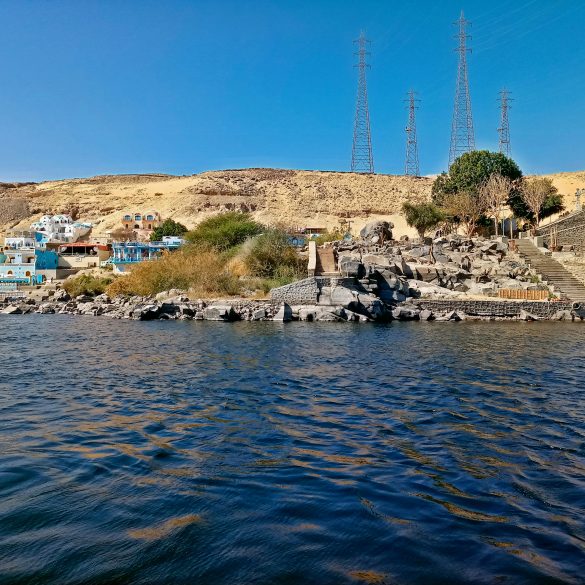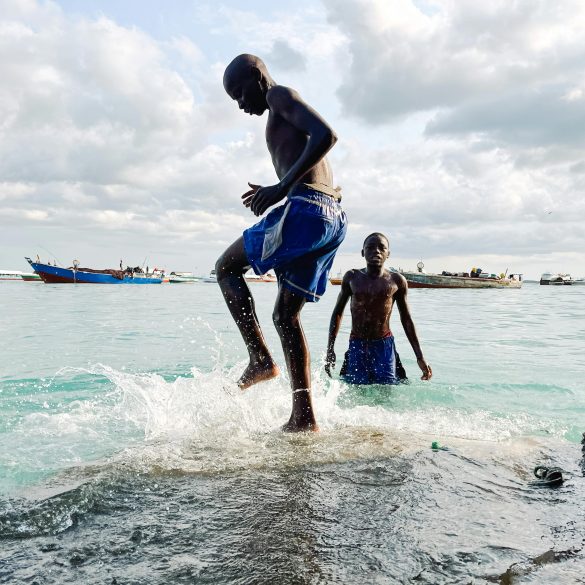How to Road Trip Across Namibia Safely: Your Complete Guide to Desert Adventure
Picture this: you’re standing beside your 4×4 vehicle at sunrise, watching the world’s oldest desert come alive with golden light stretching endlessly toward the horizon. That’s the magic of Namibia—but honestly, getting there safely requires more planning than most people realize. After years of helping travelers navigate challenging destinations, I’ve learned that the difference between an incredible adventure and a dangerous situation often comes down to preparation.
Namibia isn’t your typical road trip destination. We’re talking about a country twice the size of California with fewer than 2.5 million people1. The landscapes are absolutely breathtaking—I mean, where else can you drive from towering red sand dunes to dramatic Atlantic coastlines in a single day? But here’s what gets me excited and nervous simultaneously: those same remote, stunning locations that make Namibia magical also present genuine safety challenges that demand respect.
Why Namibia Demands Special Preparation
Let me be completely honest—I’ve traveled extensively through challenging terrains, but Namibia taught me humility. The country’s beauty is matched only by its remoteness. You might drive for hours without seeing another vehicle, let alone a fuel station. Cell phone coverage? Forget about it in most areas. GPS signals can be unreliable near certain geological formations.
Namibia Quick Facts
Size: 825,615 square kilometers (twice the size of Germany)
Population Density: 3.2 people per square kilometer
Paved Roads: Only 17% of total road network
Desert Coverage: 80% of the country is covered by the Namib and Kalahari deserts
Temperature Range: Can vary from -5°C to 45°C (23°F to 113°F) depending on season and location
What really strikes me about Namibian road trips is how quickly conditions can change. One moment you’re cruising on decent gravel roads, the next you’re navigating deep sand or rocky terrain that would challenge experienced off-road drivers. Weather patterns are equally unpredictable—I’ve seen travelers caught off-guard by sudden temperature drops at night or unexpected rainfall that turns dry riverbeds into rushing torrents.
But here’s why I’m genuinely passionate about helping people experience Namibia safely: when done right, it’s transformative. The sense of accomplishment after successfully navigating challenging terrain, the profound silence of truly remote wilderness, the incredible wildlife encounters—these experiences stay with you forever. The key is approaching this adventure with the right mindset, preparation, and respect for the environment.
Essential Pre-Trip Planning: The Foundation of Safe Travel
Honestly, this is where I see most travelers make critical mistakes. They get so excited about the destination—and I totally understand why—that they rush through the planning phase. But in Namibia, thorough preparation isn’t just recommended; it’s absolutely essential for your safety.
Timing Your Journey Strategically
The best time for road tripping depends entirely on your comfort level and experience. I generally recommend April through October for first-time visitors. Why? The weather’s more predictable, with daytime temperatures ranging from 20-25°C (68-77°F)2. Nights can still get surprisingly cold—I’m talking near-freezing in some areas—but it’s much more manageable than the scorching summer heat.
Critical Planning Timeline
- 6 months ahead: Book accommodations (seriously, popular lodges fill up fast)
- 3 months ahead: Arrange vehicle rental and insurance coverage
- 1 month ahead: Finalize route, download offline maps, arrange permits
- 1 week ahead: Check weather forecasts, road conditions, fuel availability
Here’s something that caught me off-guard during my research: fuel availability can be genuinely unpredictable. Remote fuel stations sometimes run dry for days, especially during peak tourist seasons. The Automobile Association of Namibia reports that average fuel station spacing ranges from 100-300 kilometers3. That might sound manageable, but factor in detours, getting lost, or simply wanting to explore side tracks, and suddenly your fuel range becomes critical.
Vehicle Selection: Your Lifeline in Remote Areas
This is where I get really passionate because vehicle choice can literally be life-or-death in remote Namibian conditions. Forget about saving money with a basic sedan—you need proper 4×4 capability, high ground clearance, and robust construction.
| Vehicle Type | Suitability | Key Advantages | Limitations |
|---|---|---|---|
| Double-Cab Pickup | Excellent | High clearance, cargo space, reliability | Fuel consumption, comfort on long drives |
| SUV (Toyota Fortuner/Similar) | Very Good | Comfort, storage, good off-road ability | Limited cargo space for camping gear |
| Compact 4×4 | Moderate | Better fuel economy, easier parking | Limited ground clearance, storage |
| Standard Sedan | Poor | Lower cost, comfort on paved roads | Cannot handle gravel roads safely |
I cannot stress this enough: get comprehensive insurance that covers off-road driving and potential recovery costs. Standard rental insurance often excludes gravel road damage, and recovery from remote areas can cost thousands of dollars. Several rental companies now offer specialized “Namibia packages” that include additional coverage, spare tires, and emergency equipment—absolutely worth the extra cost.

Safest Routes and Strategic Navigation
After analyzing accident reports and speaking with local guides, I’ve identified patterns in where travelers encounter serious difficulties. The truth is, some routes are significantly safer than others, especially for first-time visitors to Namibia.
Recommended Safe Route Priority
- Northern Circuit: Windhoek → Otjiwarongo → Etosha → Grootfontein → Rundu. Mostly tarred roads with regular fuel stops.
- Central Highlands: Windhoek → Rehoboth → Mariental → Keetmanshoop. Good infrastructure, reliable communications.
- Coastal Route: Windhoek → Swakopmund → Walvis Bay. Well-maintained, popular with tourists, good emergency services.
Now, here’s where I need to be brutally honest about the challenging routes. The Skeleton Coast, Kaokoveld, and parts of the Caprivi Strip require genuine off-road experience and shouldn’t be attempted without local guides. I’ve seen too many travelers underestimate these areas—the consequences can be severe.
Critical Safety Protocols
Every single day, before starting your drive, complete this safety checklist. I know it seems excessive, but it becomes second nature after a few days:
- Check tire pressure and condition (hot sand destroys under-inflated tires)
- Verify fuel level and calculate range to next confirmed fuel stop
- Test communication devices and inform someone of your route
- Check weather forecast for both current location and destination
- Confirm accommodation availability (don’t assume lodges have space)
Navigation and Communication Lifelines
GPS technology that works flawlessly everywhere else becomes unreliable in certain parts of Namibia. Satellite coverage can be spotty, and more importantly, many GPS systems don’t accurately reflect current road conditions. I learned this lesson when my GPS confidently directed me down a “road” that had been washed out months earlier.
The most reliable navigation strategy combines multiple approaches. Download offline maps from both Google Maps and specialized apps like Maps.me before leaving areas with internet connectivity4. But equally important—and this might sound old-fashioned—carry detailed paper maps as backup. The Namibia Road Map published by InfoMap Namibia remains the gold standard for accuracy.
Communication equipment deserves serious consideration. Cell phone coverage exists mainly along major routes and near population centers. For remote areas, consider renting a satellite communicator. Yes, it’s an additional expense, but being able to call for help in genuine emergencies is invaluable. Several rental companies now include these devices in their safety packages.
Desert Survival Essentials
This section makes some people uncomfortable because we’re acknowledging that things can go wrong. But that’s exactly why preparation matters so much. The harsh reality is that Namibian conditions can become life-threatening surprisingly quickly.
Water storage and consumption planning requires mathematical precision. The general rule suggests 4 liters per person per day in desert conditions, but I recommend carrying double that amount5. Dehydration symptoms appear faster than most people expect, and once you’re impaired, decision-making becomes dangerously compromised.
Temperature management becomes critical, especially during seasonal transitions. Desert nights can drop below freezing while daytime temperatures soar above 40°C (104°F). Layer clothing systems work best—lightweight, breathable fabrics for day wear with warm layers readily available for evening temperature drops.
Cultural Awareness and Sustainable Travel
Here’s something that genuinely excites me about Namibian travel: the incredible opportunity to experience diverse cultures respectfully and sustainably. Namibia hosts multiple ethnic groups, each with distinct traditions, languages, and perspectives on land use. Approaching these interactions with genuine curiosity and respect enhances safety while supporting local communities.
The Himba people in northern Namibia, the San communities in the Kalahari, and various Bantu-speaking groups throughout the country have developed sophisticated survival strategies over centuries. Many communities now offer guided experiences that provide authentic cultural exchange while generating income. These interactions often include valuable local knowledge about weather patterns, wildlife behavior, and safe travel routes.
Responsible Travel Guidelines
- Always ask permission before photographing people or private property
- Purchase crafts and services directly from communities when possible
- Respect sacred sites and follow all posted guidelines
- Minimize environmental impact through Leave No Trace principles
- Support accommodations and tour operators with strong conservation practices
Emergency Preparedness and Recovery
Let’s talk about what happens when things go wrong, because preparation for emergencies is just as important as prevention. Vehicle breakdowns, getting stuck in sand, or medical emergencies can occur despite careful planning. Having clear protocols makes the difference between minor inconvenience and serious danger.
If your vehicle becomes disabled, stay with it. This advice might seem obvious, but panic causes people to make poor decisions. Your vehicle provides shelter, is easier to spot from aircraft, and contains your survival supplies. The Namibian emergency services report that most successful rescues involve people who remained with their vehicles6.
Create visibility for potential rescuers. Use mirrors, bright clothing, or vehicle lights to signal. If you have cell phone service, even briefly, send location coordinates to emergency contacts. Many modern smartphones can share precise GPS coordinates even when regular calling isn’t possible.
Final Thoughts: Embracing the Adventure Safely
After all this safety focus, I want to end on an inspiring note. Namibia offers some of the most spectacular landscapes and wildlife experiences on Earth. The sense of accomplishment from successfully navigating challenging terrain, the profound beauty of endless desert vistas, and the warmth of Namibian hospitality create memories that last forever.
The key is approaching this adventure with appropriate preparation, genuine respect for the environment and local cultures, and realistic assessment of your own capabilities. Start with easier routes and gradually build experience. Consider joining organized convoys for your first Namibian road trip—many tour companies offer self-drive options with guide support.
Remember, the goal isn’t just to survive your Namibian road trip—it’s to thrive, learn, and create incredible memories while respecting this remarkable country and its people. With proper preparation, cultural sensitivity, and realistic expectations, your Namibian adventure can be transformative in the best possible way.
References and Additional Resources



